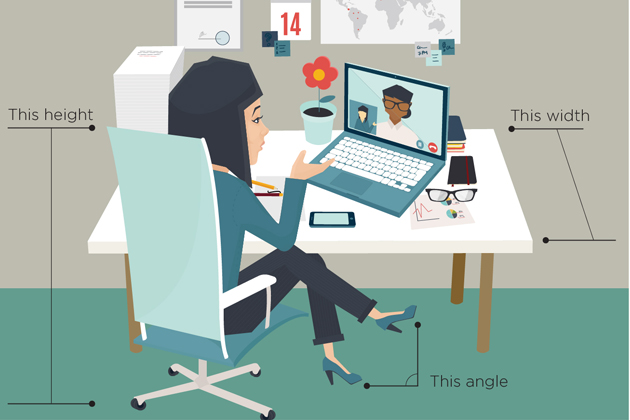
Giving employees the opportunity to work from home can help improve productivity, satisfaction and retention, all of which are key advantages for both the employee and employer. These arrangements are not without potential exposures, however, and risk managers can play a key role in developing better remote work policies, including applying ergonomics solutions designed to reduce injuries and facilitate efficiency.
Ideally, employers already have an ergonomics program in place for their office-based workforce that details how they will lead, manage and support the workplace ergonomics program, provide employee training, conduct risk or hazard assessments, and mitigate potential risk. The basic tenets of this ergonomics program can be applied to remote workers with a few key distinctions.
If a workplace ergonomics program already exists, it will be relatively easy for employers to incorporate the unique issues facing home-based workers into the current policy. For example, if standard ergonomics training is required of all employees via a web-based course, both office-based and work-from-home employees can participate. Other arrangements and accommodations may be needed for any in-person training, however.
Many requests for ergonomics solutions in the home environment stem from employees who, after spending time in their home offices, want more comfort and flexibility from their furnishings. Employers may prescribe a dollar limit and allow employees to order the office furniture they feel will best suit their needs for their home office environment. Unfortunately, this approach can result in greater cost to both the employer and the employee who may order unnecessary or inappropriate equipment.
It may also lead to questions about why some employees are allowed to purchase comparably expensive furnishings. Simply relying on the approval of department managers, even in the traditional office, can increase the risk of unfair application.
There are no current regulations that give employers clear instructions on home-office ergonomics; employers must be the ones to establish these policies. For instance, work-from-home employees may be required to pay out of their own pocket for all home equipment other than their laptop. In some cases, employees may be given an annual cash benefit or corporate discount to use toward office furniture. Alternately, employers may choose to provide equipment, such as chairs or desks, with the expectation that these items will be returned upon termination of employment, like with company laptops or mobile devices. It ultimately comes down to defining a policy based on what works best with the organization’s culture.
Employers should also provide home-based workers with information and options about cost-effective furniture and home workspace ergonomic strategies designed to prevent injury.
For any remote employees whose primary work tool is the laptop, for example, there are a few basic best practices. First, they should designate a workspace for the home office that can be equipped easily. One essential item to include is an adjustable chair. Outside of the standard models found in traditional business offices, many office supply stores and discount outlets offer adjustable chairs appropriate for the home office at price points below $300. Remote employees should look for a chair with adjustable armrests, back rest, height and tilt, and seat pan tilt.
Employees will also need an external keyboard and mouse to use with the laptop. Standard design options are appropriate for most cases, but employees can also consider using a sleeve that raises the screen height of the laptop or adding an external monitor, if desired.
Employers should also offer employees appropriate training or access to certified professional ergonomists. Even when conducted by phone or web-based chat, these professionals can suggest lower-cost solutions, such as purchasing an inexpensive footrest and raising the chair height, which may result in the same reduction in awkward arm posture as a keyboard tray that costs hundreds of dollars. This service can reduce costs and prevent employers and employees from purchasing additional equipment that may not address the right issues.
As more companies provide opportunities for employees to work remotely, they need to understand the issues and manage the potential risks of these arrangements. Establishing a work-from-home policy that includes ergonomics can help maximize the benefits and minimize costs for both employers and employees.
